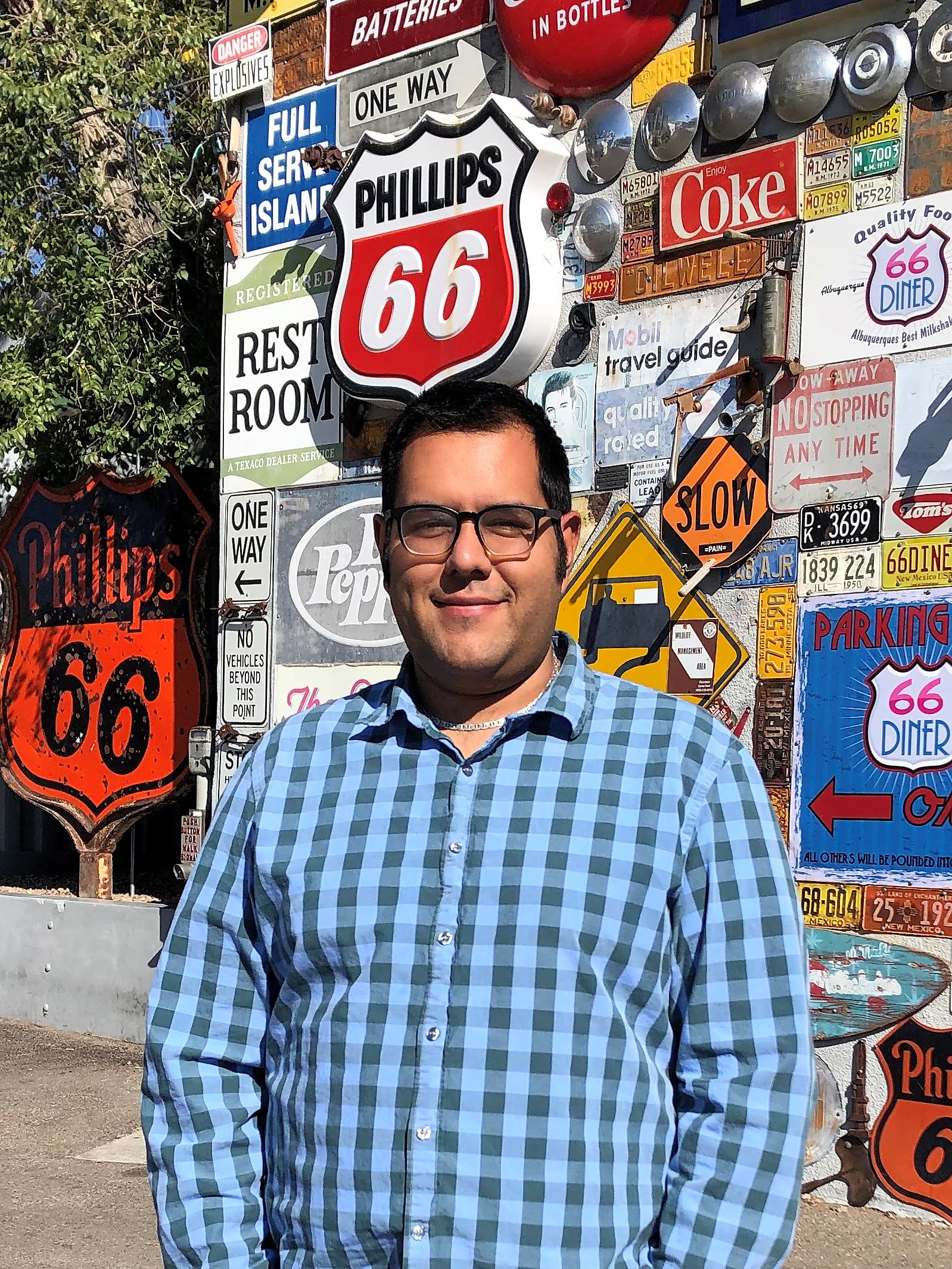Oral Presentations (5:30pm-8pm April 14, 2021)
2021 SRS Oral Presentation Participants:

Joaquin Roibal
NMT Graduate
Mineral Engineering
SRS2021-118
"Analysis of Copper Mining Accidents in United States, 2010-2019"
Mining is an imperative industrial activity which utilizes heavy machinery and hazardous environments. An increased demand for Electric Vehicles is increasing demand for copper, therefore it is important to study the safety of miners by looking at historical data. The federal agency, Mine Safety and Health Administration (MSHA) was created in order to reduce injuries and maintain a database of workplace injuries and fatalities. MSHA administers provisions of the Federal Mine and Health Safety Act of 1977 to enforce compliance and regulations for mine sites and industry throughout the United States. For this research project, MSHA data of reported injuries will be analyzed to discover trends in safety accidents in copper mining in the United States for the years of 2010-2019. The MSHA database of accidents and injuries will be analyzed according to age, mine experience, geographical location and other variables. Our research determined that the vast number of injuries occurred to miners with less than 5 years of mining experience and resulted in 0 days lost for their work injuries. Miners were split up into three categories: less than 5 years of experience, 5-10 years of experience, and greater than 10 years of experience in order to make a recommendation for safety training of both new and experienced miners. A baseline rate of injury was developed per thousand metric ton of copper mined which can be used to gauge mine safety health practices in the future.

Charlotte Dungan
NMT Graduate
Environmental Engineering
SRS2021-149
"Absorption coefficient measurements and their relation to air quality and climate change: Intercomparison of a photometer and aethalometer"
Atmospheric aerosols (suspensions of particles) derive from multiple human and natural sources. They contribute to climate change by alternately enhancing or masking greenhouse gas warming depending on aerosol properties. Aerosols’ effect on climate is currently the single largest physical uncertainty in climate modeling efforts as it ultimately impacts cloud feedbacks. Aerosol absorption is the dissipation of radiant energy as it passes through a particle resulting in the heating of the particle and surrounding air. Based on the refractive index, a particle will absorb, reflect, or transmit radiant energy. The absorption coefficient (babs), measurable at multiple wavelengths in typical units of 1/Mm, quantifies warming from particles. Measurement techniques are diverse; here we focus on the Tricolor Absorption Photometer (TAP) and MA200 mini-Aethalometer (MA200). The TAP and MA200 measure light attenuation due to aerosol deposited on a filter. The TAP has 3-wavelengths (375, 525, and 625 nm) while MA200 has 5 wavelengths (375, 470, 528, 625, and 880 nm) spanning the UV, visible, and IR spectrum. Here the instruments are compared with continuous measurements of ambient aerosols at NMT. Our focus is comparing (1) temporal trends, (2) wavelength dependence, and (3) the overall accuracy of both instruments. Measurements show peaks in absorption coefficients between 8:00 PM to midnight in winter months, likely a function of wood-burning. Early results show a strong statistical correlation between the instruments and general agreement on wavelength dependence. MA200 has, however, has an absorption coefficient larger by a factor of 1.2-1.7 than the TAP which is under investigation.

Qi Wang
NMT Graduate
Chemistry
SRS2021-150
"How Lipid Changes in Breast Tumor Cell Membranes May Influence Radiation Therapy Outcomes"
Breast cancer is the most common cancer in American women, except for skin cancers. Cancerous tissues often experience low-oxygen conditions (hypoxia). However, the effectiveness of tumor radiation therapy relies on oxygen inside the tumor cells. Oxygen enters cells by diffusing across phospholipid bilayer membranes, and our group is interested in understanding how the membrane composition affects oxygen access. The membranes of breast tumors contain unusually high levels of newly synthesized lipids, which differ in chemical structure from common membrane lipids. Specifically, more advanced and aggressive tumors have higher levels of long-chain saturated phospholipid tails. Here, we investigate the effects of several common newly synthesized lipids on the rate of oxygen diffusion across model lipid bilayer membranes by a physics-based modeling technique known as atomistic molecular dynamics simulations. Based on the data, newly synthesized lipids which have diverse chain lengths do affect oxygen permeability. In particular, long-chain saturated phospholipid tails show decreased oxygen permeability. Therefore, these newly synthesized lipids might contribute to tumor cell hypoxia if their effects on oxygen permeability are preserved in real (complex) biological membranes. The insights gained from this work may lead to new strategies for personalized radiation therapy treatment.

Britney Green
NMT Undergraduate
Civil Engineering
SRS2021-172
"Analyzing Gas Tax Alternatives and Phasing Out Flex Fuels Techniques for Decarbonizing Transportation"
This study is being conducted at the request of the New Mexico Department of Transportation Research Bureau to support Governor Michelle Lujan Grisham’s Climate Action Team’s efforts to decarbonize New Mexico’s transportation. The New Mexico Tech research team are working on two significant tasks: 1. developing a computable general equilibrium model to quantify proposed efforts and 2. analyzing the best decarbonization practices such as incentivizing electric vehicle purchases, electrifying public transit, exploring gas tax alternatives, and phasing out flex fuel vehicle incentives. The presentation will focus on gas tax alternatives and the phasing out of flex fuel incentives by different states. The gas tax’s flat-rate, per-gallon charge is growing obsolete with vehicles improving their fuel efficiency. Vehicle miles traveled programs, toll roads and public-private partnerships were determined to be viable gas tax alternatives, as reported from other states’ actions. The second issue addressed relates to flex fuels. In 1992, the United States government passed the Energy Policy Act (EPAct) which provides credits for state, federal, and alternative fuel fleets who acquire alternative fuel vehicles (AFVs). AFVs are vehicles that do not run on traditional petroleum fuel such as flex fuel vehicles (FFVs). FFVs are the most popular acquired vehicle under EPAct despite being less sustainable compared to other AFV options such as electric vehicles. Many state acquisition incentives are expiring and have no indication for renewal. The research team is developing a survey to assess the efforts of other states to determine best practices for decarbonizing transportation in New Mexico.

Anthony Morgan
NMT Graduate
Petroleum Engineering
SRS2021-177
"A Gate-to-Gate Life Cycle Assessment for the CO2-EOR Operations at Farnsworth Unit (FWU)"
A Greenhouse gas (GHG) emission related to the Farnsworth Unit (FWU) carbon dioxide enhanced oil recovery (CO2-EOR) operations was accounted for through a gate-to-gate life cycle assessment (LCA) for a period of about 10 years since start of injection to 2020 and predictions of 18 additional years to the economic limit of the CO2-EOR operation. A cumulative amount of 4.76*106 metric tons of oil has been recovered through the injection of 1.49*106 metric tons of purchased CO2 of which 92% was stored during the 10-year period. An LCA analysis conducted on the various unit emissions of the FWU process yielded a net negative (positive storage) of 1.187*106 metric tons of CO2 equivalent representing 79% of purchased CO2. An 18-year forecasted analysis with optimized conditions, the future CO2 injection with minimal flaring/venting estimated 86% storage of the forecasted 2.91*106 metric tons of purchased CO2 with an equivalent 2.63*106 Metric tons of crude oil produced by 2038. Major contributors to emissions were flaring/venting and energy usage for equipment. Improvements on energy efficiency of equipment would reduce emissions further but this could be challenging. However, improvement on injection capacity and elimination of venting/flaring or fugitive gas are more sure ways of reducing net emissions as was the case for the optimized scenario in this work. This LCA illustrated the potential for the CO2-EOR operations in the FWU to store more CO2 with minimal emissions. .
For general information, please email srs@nmt.edu.
